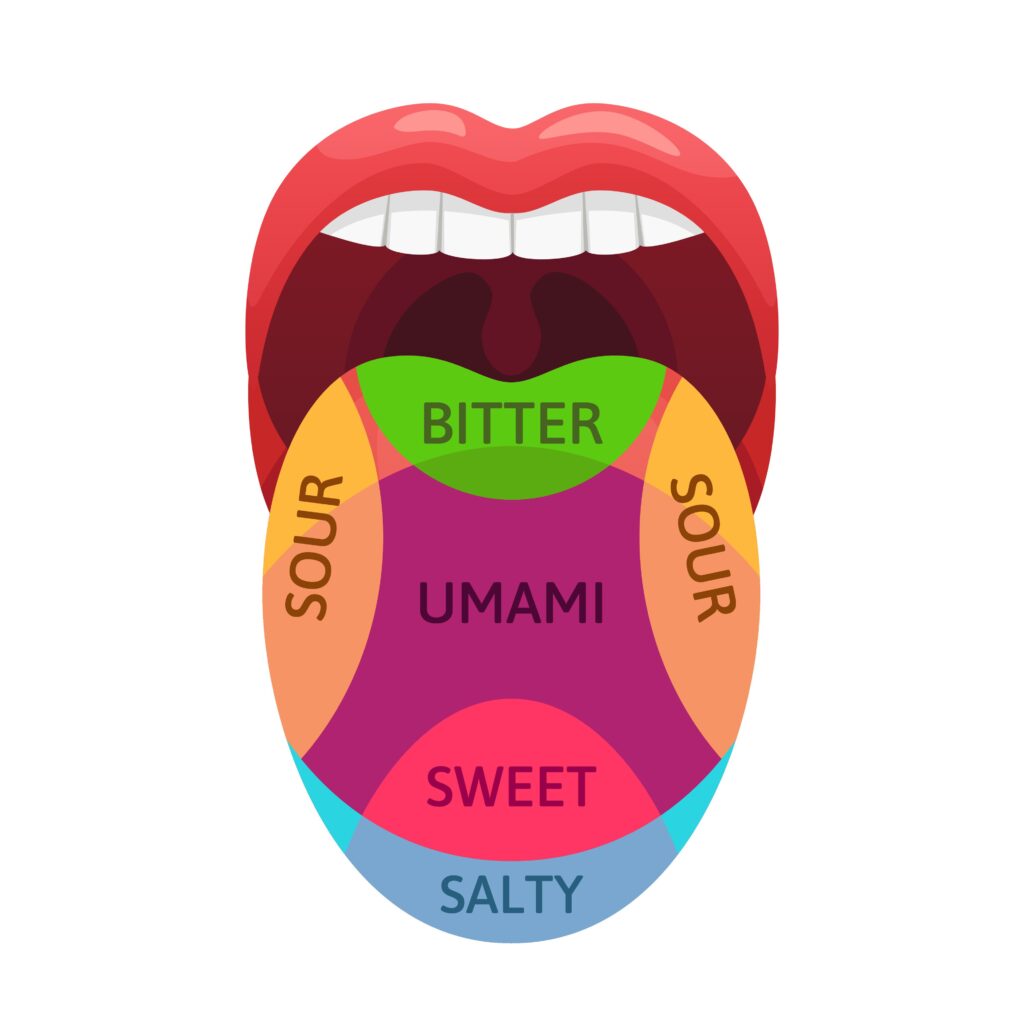
The taste buds are small neuroepithelial structures found on the upper surface of the tongue, in the upper larynx, and in the posterior part of the oropharynx. Their main function is to perceive the flavors of food. The taste buds connect with the cranial nerves which transmit taste sensations to the brain.
There are four types of papillae: filiform, fungiform, valley and foliate. Each of them is made up of receptor cells that recognize different tastes, such as: sweet, salty, sour, bitter and umami.
The taste buds for recognizing bitterness are the vallate or circumvallate papillae, which are the largest but the least several. These papillae are located at the back of the tongue, forming an upside-down V. They are surrounded by a groove (vallo) and contain numerous taste buds. Bitter receptors react to the presence of bitter substances, such as alkaloids, flavonoids and glucosinolates.
The taste buds to recognize sweetness are the fungiform papillae, which are the same ones that recognize salty. These papillae are found mainly on the tip of the tongue, where the perception of sweetness is greatest. Sweet receptors react to the presence of sugary substances, such as glucose, fructose and sucrose.
The taste buds for recognizing salty taste are the fungiform papillae, which are mushroom-shaped reliefs with a narrow base and a swollen apex. These papillae are found mainly on the tip and sides of the tongue, where salty perception is greatest. Salt receptors react to the presence of sodium, which is the main component of table salt.
The taste buds for recognizing acid are sensory receptors found on the tongue and other parts of the oral cavity. The taste buds for acid are found mainly in the back of the tongue, but also in the soft palate, pharynx and epiglottis.
The taste buds to recognize umami are the mushroom buds, which are the same ones that recognize sweet and salty. These papillae are found primarily at the tip and center of the tongue, where umami perception is greatest
